armed forces
We are witnessing the future of war on the battlefields of Ukraine
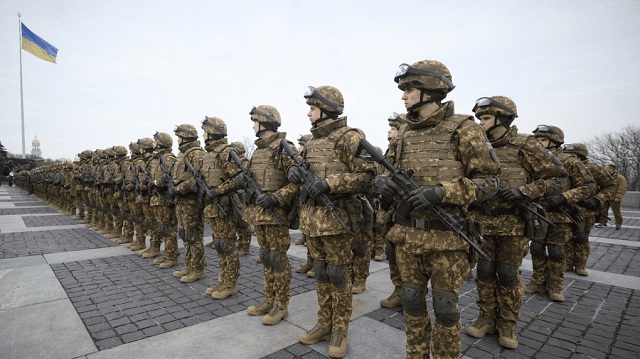
From the MacDonald Laurier Institute
By Richard Shimooka
We would be wise to learn the lessons the Ukrainians have fought so hard to learn
Historically, certain wars have stimulated the development of future defence thinking. The 1905 Russo-Japanese War previewed many features of the Great War a decade later, including the lethality of machine guns and howitzers, as well as the ubiquity of trench warfare. The 1973 Yom Kippur War between Israel and its Arab Neighbours was particularly influential for present wars—the Arab combatants’ use of new anti-tank guided missiles challenged many existing doctrines. This is not to say that all groups absorb the lessons directly or effectively. Many of the great powers, including Russia (who fought in the 1905 war), failed to adopt the lessons laid bare in that conflict and suffered grievous casualties in the first years of World War I as a result.
Approaching two years since the invasion, the war in Ukraine has the potential to have an outside impact on the future of war for a variety of reasons. Its timing comes as a number of new technologies have emerged, many of which have come from the civilian space. These include the proliferation of drones, low-cost satellites, and high bandwidth networking—all of which to date have had major effects on the outcome of the war.1 Over the past two years, both sides have adapted their doctrine and capabilities to reflect a cycle of learning and adaptation which gives a clearer understanding of where these technologies are headed.
Some of these trends are a validation of overriding trends in warfare, particularly around the collection and use of data afforded by networked systems. This is evident in the maturation of the “reconnaissance-strike” complexes in Russian and Ukrainian doctrine. Essentially, this is a streamlining of the process of identifying and attacking targets with precision fire, usually from some form of artillery. The United States and NATO have been pursuing a roughly similar—but much more advanced and all-encompassing—concept known as “multi-domain operations.” There are several common denominators between both doctrines, including the effort to expand detection over wider areas, as well as hastening the decision-making process which can improve the lethality of any weapon system attached to it. While it may not be able to employ traditional airpower, the use of long-range artillery (including the recently provided ATACMS missile system) shows the effectiveness of this approach to war. It also allows for a greater economy of force—a critical consideration for Ukraine due to its disadvantageous economic and strategic situation facing a state three times its size.
A key feature of progress in this area is its organic nature. Since the start of direct hostilities in 2014, Ukraine has done well to build up some of these connective capabilities adapting civilian systems for military purposes, such as the Starlink satellite network and apps for mobile devices. A large portion are ground-up approaches, developed even by military units to suit their particular operational needs. This was part of the total war approach that the Ukrainian government has instituted, often leveraging their emerging tech industries to develop new capabilities to fight against the Russian Federation. Many allies have similar efforts, but too often focus remains on a very centralized, top-down approach, which has led to substandard outcomes. Some balance between the two poles is likely ideal.
Another major consideration is the revolutionary impact of drones on air warfare. Traditional manned airpower, like F-16, Mig-29s, and even attack helicopters, remain as relevant as ever in Ukraine. While no side possesses true air superiority, some localized control has been established for short periods, resulting in potentially decisive consequences. However, the war has followed the trend of other recent wars with low-cost, attritable drones playing an important role. While this has been evident in the strike-reconnaissance doctrine discussed above, the so-called kamikaze loitering drones, such as the Russian Lancet and armed first-person view commercial drones, have played an important role as well.
One important aspect is what is known as the “mass” of these capabilities—not individually, but as a collective system or swarm of multiple individual units that can be lost without a major degradation of their lethality. At present, the link between traditional and emerging airpower domains is fairly disjointed over the battlefield in Ukraine, perhaps due to lingering service parochialism. But once combined they will only multiply each other’s lethality.
There is, however, one question concerning this new frontier of airpower’s ultimate influence in the future. It hinges significantly on the efficacy of new anti-drone systems, like those being developed by the United States Army and NATO allies. These potentially may blunt or even remove the deadly threat these UAVs pose to modern ground forces. But as of now they are in their infancy and very few are present in Ukraine today. If they are unable to make a major impact, then the future of conflict will be radically different.
Over the past thirty years, Canada, the United States, and its allies have often been able to deploy troops abroad to many stabilization and peacekeeping missions, in part due to the relatively benign threat environment they were entering. There was confidence that deployed soldiers would not incur significant casualties, which would arouse domestic opposition to the missions themselves. If the lethality of these unmanned drone systems remains unchecked, then, considering their greater ubiquity, it may drastically constrain the ability of Western countries to intervene and assert their muscle abroad, even in low-risk environments.
Finally, and perhaps most critically, is the need for an adaptive defence industrial base (another word for military supply chains) with the capacity to meet a wide need for war. The Russian Federation, for example, faced wide-ranging and intrusive sanctions from the start of the conflict that precluded them from obtaining a number of key resources for their war effort, ranging from raw materials to advanced technology components. They have been able to weather these challenges due to a combination of factors: a deliberate effort to develop an autarkic industrial base that started after 2014, a less technologically advanced military, and sanctions-avoiding policies such as smuggling and diversifying their foreign supplier base to more reliable allies.
While Western allies are unlikely to face the same restrictions in a potential future conflict on the scale that Russia has, in some ways they have greater challenges. These countries rely on much more sophisticated military capabilities that have levels of complexity far in excess of Russian systems. The sheer diversity in all of the raw materials inputs and various subcomponent providers, as well as the networks to make them all work, means that they are actually much easier to disrupt. Shades of this were evident during the initial months of the COVID-19 epidemic when the production of civilian goods was affected by shortages and supply chain disruptions.
Furthermore, underinvestment in the defence industrial base has left the capacity to ramp up production in most areas perilously slow, even two years after the conflict started.
More effort must be spent on creating a much more resilient industrial base that has the capacity to ramp up production to meet the needs of modern war. This requires significant front-end investment by governments in capacity building as no private firm is willing to spend money in that fashion without any guarantee of a return. At the same time, building capacity must be targeted and appropriate to the actual needs of Canada and its allies—taking lessons from Ukraine without understanding their context would be a mistake. That war and its material demands are unique to it.2 Discerning the actual needs and developing accordingly should be done through careful analysis and wargaming, much like the recent Center for Strategic International Studies analysis on U.S. missile needs in a potential war against China has done.
In the end, a clear trend that seems to bind all of these areas is the need for adaptability and critical thinking. Warfare is fast becoming more lethal and decisive. Modern armies must be able to respond to those changes as quickly as they occur—or better yet, lead those changes against their adversaries. That, for one, cannot occur in an organization that is continually starved for funding like the Canadian Armed Forces is today.
But it may also require a radical reorganization and re-think of how defence policy, strategy, operations, and doctrine are developed and implemented—not to mention personnel and industrial policy. As the conflict in Ukraine has laid bare, bringing in the brightest minds and giving them greater leeway to develop responses is key, as is harnessing the potential and building the capacity of domestic industrial bases. These are essential and urgent lessons we must learn. They have been hard won by the sacrifices of the Ukrainian people for our benefit. It would be a shame to waste them.
Richard Shimooka is a Hub contributing writer and a senior fellow at the Macdonald-Laurier Institute who writes on defence policy.
armed forces
Global Military Industrial Complex Has Never Had It So Good, New Report Finds
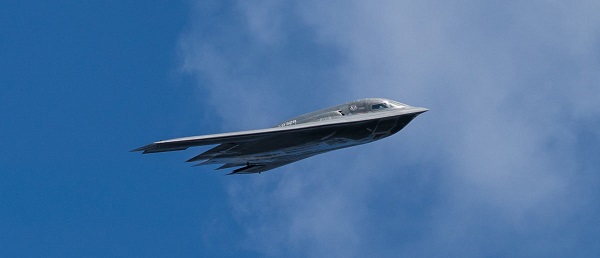

From the Daily Caller News Foundation
The global war business scored record revenues in 2024 amid multiple protracted proxy conflicts across the world, according to a new industry analysis released on Monday.
The top 100 arms manufacturers in the world raked in $679 billion in revenue in 2024, up 5.9% from the year prior, according to a new Stockholm International Peace Research Institute (SIPRI) study. The figure marks the highest ever revenue for manufacturers recorded by SIPRI as the group credits major conflicts for supplying the large appetite for arms around the world.
“The rise in the total arms revenues of the Top 100 in 2024 was mostly due to overall increases in the arms revenues of companies based in Europe and the United States,” SIPRI said in their report. “There were year-on-year increases in all the geographical areas covered by the ranking apart from Asia and Oceania, which saw a slight decrease, largely as a result of a notable drop in the total arms revenues of Chinese companies.”
Notably, Chinese arms manufacturers saw a large drop in reported revenues, declining 10% from 2023 to 2024, according to SIPRI. Just off China’s shores, Japan’s arms industry saw the largest single year-over-year increase in revenue of all regions measured, jumping 40% from 2023 to 2024.
American companies dominate the top of the list, which measures individual companies’ revenue, with Lockheed Martin taking the top spot with $64,650,000,000 of arms revenue in 2024, according to the report. Raytheon Technologies, Northrop Grumman and BAE Systems follow shortly after in revenue,
The Czechoslovak Group recorded the single largest jump in year-on-year revenue from 2023 to 2024, increasing its haul by 193%, according to SIPRI. The increase is largely driven by their crucial role in supplying arms and ammunition to Ukraine.
The Pentagon contracted one of the group’s subsidiaries in August to build a new ammo plant in the U.S. to replenish artillery shell stockpiles drained by U.S. aid to Ukraine.
“In 2024 the growing demand for military equipment around the world, primarily linked to rising geopolitical tensions, accelerated the increase in total Top 100 arms revenues seen in 2023,” the report reads. “More than three quarters of companies in the Top 100 (77 companies) increased their arms revenues in 2024, with 42 reporting at least double-digit percentage growth.”
armed forces
2025 Federal Budget: Veterans Are Bleeding for This Budget
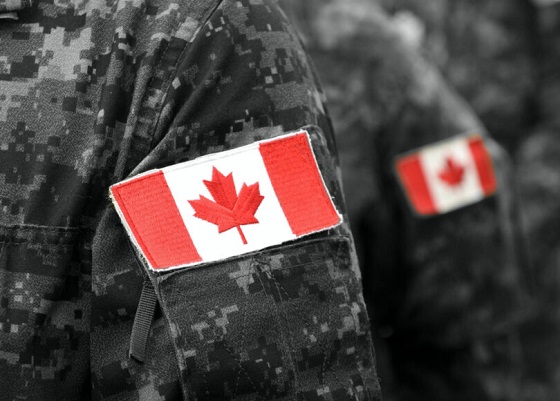
How the 2025 Federal Budget Demands More From Those Who’ve Already Given Everything
I’ve lived the word sacrifice.
Not the political kind that comes in speeches and press releases the real kind. The kind Mark Carney wouldn’t know if it slapped him in the face. The kind that costs sleep, sanity, blood. I’ve watched friends trade comfort for duty, and I’ve watched some of them leave in body bags while the rest of us carried the weight of their absence. So when the Prime Minister stood up this year and told Canadians the new budget would “require sacrifice,” I felt that familiar tightening in the gut the one every veteran knows. You brace for impact. You hope the pain lands in a place that makes sense.
It didn’t.
Kelsi Sheren is a reader-supported publication.
To receive new posts and support my work, consider becoming a free or paid subscriber.
Six months into Mark Carney’s limp imitation of leadership, it’s painfully clear who’s actually paying the bill. The 2025 budget somehow managing to bleed the country dry while still projecting a $78-billion deficit shields the political class, funnels money toward his network of insiders, and then quietly hacks away at the one department that should be sacrosanct: Veterans Affairs Canada.
If there’s one group that’s earned the right to be spared from government-imposed scarcity, it’s the people who carried this country’s flag into danger. Veterans don’t “symbolize” sacrifice they embody it on the daily And when Ottawa tightens the belt on VAC, the consequences aren’t abstract. They’re brutal and direct, causing nothing but more death and destruction. But Mark Carney doesn’t lose sleep over veterans killing themselves.
Punishment disguised as budgeting for a veteran means the difference between keeping a roof or sleeping in a truck. Punishment disguised as budgeting means PTSD left untreated until it turns a human being into another suicide statistic. Punishment disguised as budgeting means a veteran choosing between groceries and medication because some number-shuffler in Ottawa wants to pretend they’re being “responsible.”
This isn’t fiscal restraint it’s political betrayal wrapped in government stationery. Ottawa sells it as hard choices, but the hardness always falls on the backs of the same people: the ones who already paid more than their share, the ones who can’t afford another hit. Carney and his cabinet won’t feel a thing. Not one missed meal. Not one sleepless night. Not one flashback.
But the men and women who already paid in flesh? They’re the ones being told to give more.
That’s not sacrifice.
That’s abandonment dressed up as fiscal policy.
And Canadians need to recognize it for what it is a government that demands loyalty while refusing to give any in return. The fine print in the government’s own documents reveals what the slogans won’t.
Over the next two years, VAC plans to cut $2.227 billion from its “Benefits, Services and Support” programs. [2] Broader “savings initiatives” reach $4.4 billion over four years, much of it through reductions to the medical-cannabis program that thousands of veterans rely on to manage chronic pain and PTSD. [3] Independent analysts estimate yearly losses of roughly $900 million once the cuts are fully implemented. [4]
To put that in perspective: no other department is seeing reductions on this scale. Not Defence, not Infrastructure, not the Prime Minister’s Office thats for damn sure. Only the people who’ve already paid their debt to this country are being asked to give again.
The government’s line is tidy: “We’re not cutting services we’re modernizing. Artificial Intelligence will streamline processing and improve efficiency.”
That sounds fine until you read the departmental notes. The “modernization” translates into fewer human case managers, longer waits, and narrower eligibility. It’s austerity dressed up as innovation. I’ve coached veterans through the system. They don’t need algorithms; they need advocates who understand trauma, identity loss, and the grind of reintegration. They need empathy, not automation.
This isn’t abstract accounting. Behind every dollar is a life on the edge, the human cost and toll is very real.
- Homelessness: Veterans make up a disproportionate number of Canada’s homeless population. Cutting benefits only deepens that crisis.
- Mental Health: Parliament’s ongoing study on veteran suicide shows rising rates of despair linked to delays and denials in VAC services. [5] Knowing MAID for mental illness alone in 2027 will take out a significant amount of us.
- Food Insecurity: A 2024 VAC survey found nearly one in four veterans reported struggling to afford basic groceries. That’s before these cuts.
We talk about “service” like it ends with deployment. It doesn’t. Service continues in how a nation cares for those who carried its battles, and this doesn’t include the cannabis cut to medication or the fight’s we have to fight when they tell us our injuries are “not service related”
The insult is magnified by the timing. These cuts were announced just days before November 11 Remembrance Day, when Canadians bow their heads and say, “We will remember them.”
Apparently, the government remembered to draft the talking points but forgot the meaning behind them, not a single one of the liberal government should have been allowed to show their faces to veteran’s or at a ceremony. They’re nothing but liars, grifters and traitors to this nation. Yes I’m talking about Jill McKnight and Mark Carney.
The budget still runs the second-largest deficit in Canadian history. [6]
Veteran cuts don’t fix that. They barely dent it. What they do is let the government say it’s “finding efficiencies” while avoiding the real structural overspending that created the problem in the first place. When a government chooses to protect its pet projects and insider contracts while pulling support from veterans, that’s not fiscal discipline it’s moral cowardice. The worst part is that This isn’t an isolated move. It fits a six-month pattern: large, attention-grabbing announcements about “reform,” followed by fine print that concentrates power and shifts burden downward. Veterans just happen to be the first visible casualty.
The same budget expands spending in other politically convenient areas green-transition subsidies, digital-governance infrastructure, and administration while the people who once embodied service are told to tighten their belts.
As a combat veteran, I know what it’s like to come home and realize that the fight didn’t end overseas it just changed terrain. We fought for freedom abroad only to watch bureaucratic neglect wage a quieter war here at home. Veterans don’t ask for privilege. They ask for respect, for competence, for follow-through on the promises this country made when it sent them into harm’s way.
Here’s what really needs to change, the liberal government has to go, thats step one. Restore VAC funding immediately. Any “savings” plan that touches benefits, services, or support should be scrapped. End the AI façade. Efficiency can’t replace empathy. Keep human case workers who understand the veteran experience. Audit and transparency. Publish a detailed breakdown of where VAC funds are cut and who approved it. Canadians deserve to see the receipts. National accountability. Every MP who voted for this budget should face veterans in their constituency and explain it, face-to-face.
Budgets are moral documents. They show what a country values. By slashing VAC while running record deficits, this government declared that veterans are expendable line items, not national obligations. The Prime Minister promised “shared sacrifice.” But the only people truly sacrificing are the ones who already gave more than most Canadians ever will.
Sacrifice isn’t about spreadsheets; it’s about service. It’s what every veteran understood when they raised their right hand. This government’s brand of sacrifice asking wounded soldiers to pay for political mismanagement isn’t austerity. It’s abandonment.
Canada owes its veterans more than a wreath once a year. It owes them respect written into every budget, not erased from it.
KELSI SHEREN
Footnotes
[1] The Guardian, “Canada’s 2025 Federal Budget Adds Tens of Billions to Deficit as Carney Spends to Dampen Tariffs Effect,” Nov 5 2025.
[2] True North Wire, “Liberal Budget to Cut $4.23 Billion from Veterans Affairs,” Nov 2025.
[3] StratCann, “Budget 2025 Includes Goal of Saving $4.4 Billion in Medical Cannabis Benefits,” Nov 2025.
[4] Canadian Centre for Policy Alternatives, “Where Will the Federal Government Cut to Pay for Military Spending and Tax Cuts?” Nov 2025.
[5] House of Commons Standing Committee on Veterans Affairs, “Study on Veteran Suicide and Sanctuary Trauma,” ongoing 2025.
[6] CBC News, “Federal Budget 2025 Deficit Second Largest in Canadian History,” Nov 2025.
Kelsi Sheren is a reader-supported publication.
To receive new posts and support my work, consider becoming a free or paid subscriber.
-

 espionage2 days ago
espionage2 days agoWestern Campuses Help Build China’s Digital Dragnet With U.S. Tax Funds, Study Warns
-

 Focal Points1 day ago
Focal Points1 day agoCommon Vaccines Linked to 38-50% Increased Risk of Dementia and Alzheimer’s
-
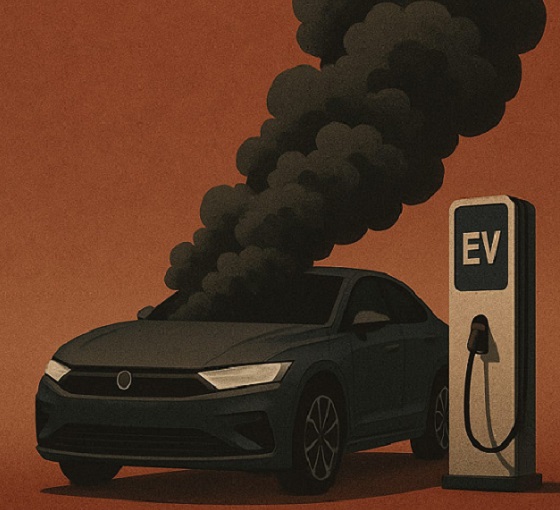
 Automotive20 hours ago
Automotive20 hours agoThe $50 Billion Question: EVs Never Delivered What Ottawa Promised
-
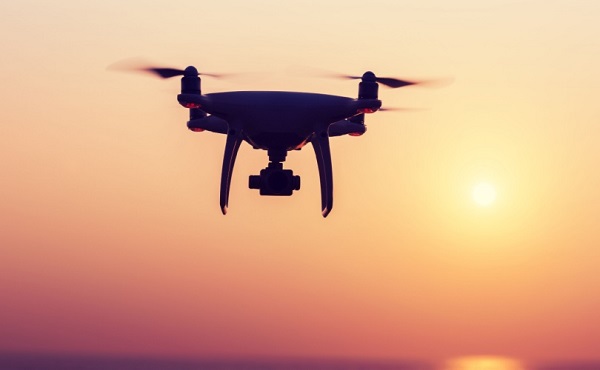
 Business2 days ago
Business2 days agoCanada invests $34 million in Chinese drones now considered to be ‘high security risks’
-

 Health1 day ago
Health1 day agoThe Data That Doesn’t Exist
-

 Economy2 days ago
Economy2 days agoAffordable housing out of reach everywhere in Canada
-

 Business14 hours ago
Business14 hours agoStorm clouds of uncertainty as BC courts deal another blow to industry and investment
-

 Business1 day ago
Business1 day agoThe Climate-Risk Industrial Complex and the Manufactured Insurance Crisis





